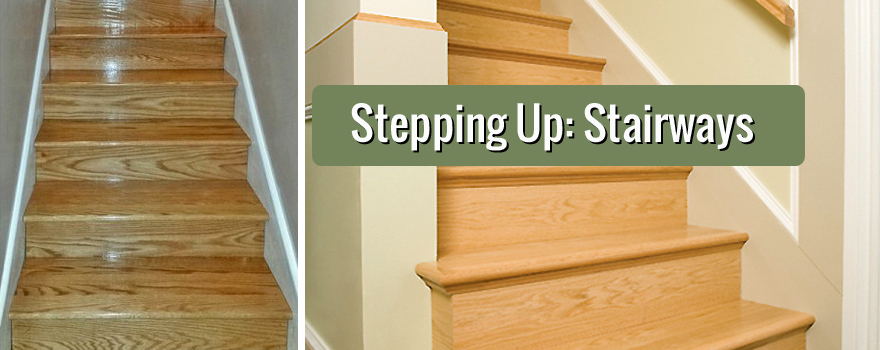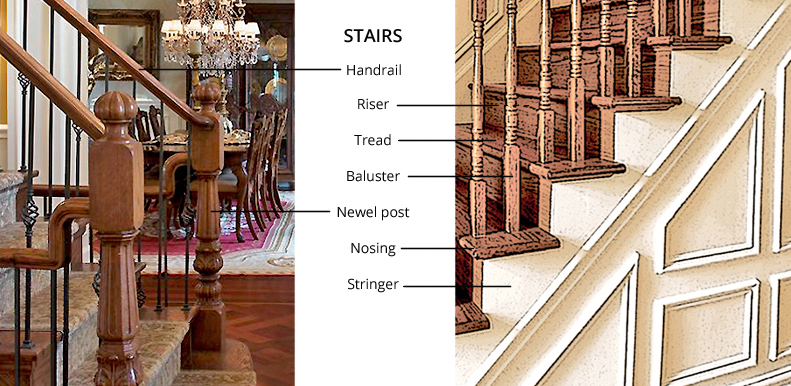General
New Staircase: Treads, Risers, Balusters

Are you building a new staircase or is the one currently in your home in need of repair? Step up! Solid wood oak stair treads are just one part of completing a stairway. Here’s a short list of stairway terms you should know and a few materials you’ll need when working on a stairway.
A New Staircase
Basic parts to a stairway:
- Tread – The horizontal part on a stairway where your foot touches.
- Riser – The vertical part at the back of a tread.
- Balusters – The vertical supports for a handrail; also known as spindles. Wood, stone, metal or durable plastic are common materials for balusters. A guide for placement: 4” apart or three balusters per foot for code. Check your local building codes for exact spacing.
- Newel post – The central support or post which supports a handrail, usually at the top and bottom of the stairway; also found on a landing. In addition, posts are varied and can be decorative or plain.
- Handrail – Just as it sounds, a handrail is used by a person for support while ascending or descending stairs. It is mounted to a wall or placed on balusters for support. Typically, it is positioned between 34” – 38” above treads and landings. Again, check your local building codes for exact measurements.
- Stringer – A structural part at the side of a staircase which supports the treads and risers.
- Nosing – The rounded end of a stair tread.
- Landing – This is a platform area after a series of stairs or if there is a change in direction in the stairway.

Ups & Downs
A rule of thumb is that a flight of stairs holds 12 steps. Furthermore, be careful about spacing for treads and risers. You’ll want these to be evenly spaced and comfortable when walking up and down the stairs. Remember to check with local building inspectors about codes before you tackle this job.
